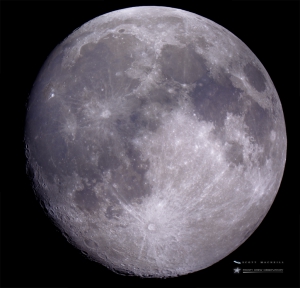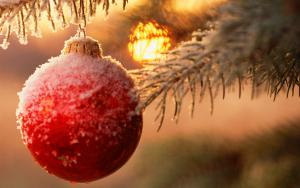
Stargazing Nights
- Where:
- Frosty Drew Observatory
- When:
- Friday December 16, 2016 at 6:00 p.m.
- Cost:
- $1 Suggested Donation per Person
Tonight is Stargazing Night at Frosty Drew Observatory and forecasts are looking a bit variable. For sure, it will be cold – super cold, and we can expect increasing clouds as we move along tonight, with full cloud cover happening sometime between 9:00 p.m. - 11:00 p.m. as the coming snow approaches. Variability lies in the time frame that excessive cloud cover will push in. Some sources are calling for partly cloudy skies earlier in the evening, with others calling for mostly clear skies until 9:00 p.m. The bright 90% waning gibbous Moon will rise just after 7:30 p.m. blasting out any chance of dark sky viewing. Though with the coming storm, cold temps, and bright Moon; we have a very high probability of catching sight of a fabulous 22° lunar halo. Certainly worth a visit!
We will open the Observatory and Sky Theatre at 6:00 p.m. In the Observatory, we will closely monitor sky conditions, and if acceptable, we will start with views of Venus, Uranus, and what ever else the sky is offering. If clouds get combative, we will move to standby and monitor the sky for viewing opportunities. Checking in on our Twitter (@FrostyDrewOBSY) or Facebook will get you updates from the Observatory on sky conditions and when we are closing up. In the Sky Theatre temps will be toasty warm and on display will be a showcase of celestial objects photographed at Frosty Drew Observatory. We will stay open until 11:30 p.m. or until clouds chase us out, whichever comes first.
Overall, tonight is not the most optimal night to rock the sky. Increasing clouds will keep us on the run most of the night until they kick us out. Our redeeming value will certainly be the significant chance for a bright 22° lunar halo, which usually appear on cold nights with increased moisture in the air. If the Moon is your digs, then tonight could be a good night for you. Though if you’re making the long drive, I would sit this one out and stay warm. If visiting, be sure to dress for extremely cold winter conditions! Read our article about dressing for cold Frosty Drew nights, then gear up, step out, and hope with the best at Frosty Drew, tonight.
---------------------
Weekly Happenings
Scott MacNeill
Overnight Wednesday, December 21-22, 2016, the annual Ursid Meteor Shower will peak. A relatively small, less active meteor shower, the Ursids will bring an increase in visible meteor activity by upwards to 10 meteors per hour. The waning crescent Moon will rise just before 1:00 a.m. and brighten up the sky a bit. Since we missed out on the fabulous Geminid Meteor Shower this year due to the bright Moon and weather, the Ursids will offer up a slight second chance at meteor watching. If you’re holding out for awesome meteor showers, then you will have to wait until overnight Tuesday, January 3-4, 2017, when the Quadrantid Meteor Shower blazes the sky to our freezing delight. To watch the Ursid shower, set out for a midnight rendezvous with wide open dark skies. Lay on your back with your feet to the north and look to the zenith (top of sky). Happy meteor watching!
On Wednesday, December 21, 2016 at 5:44 a.m. EST, Earth will reach the point in its orbit where the Northern Hemisphere will be at maximum tilt (23.4°) away from the Sun. This is the Winter Solstice and marks the first day of Winter in the Northern Hemisphere. On the Winter Solstice, we will experience our shortest daytime period of the year in the Northern Hemisphere. Locations north of the Arctic Circle will have 24 hours of night with corresponding locations south of the Antarctic Circle experiencing 24 hours of daylight. In the Southern Hemisphere the Sun will cross the zenith (directly overhead) along the Tropic of Capricorn, resulting in the Sun crossing the sky 23.4° below Earth’s equator. All that aside, the Winter Solstice brings all the fabulous celebrations we have during this time of the year. It’s a harbinger of the cold long dark ahead as we descend into the winter, though also the point that the days start to get longer as we begin our shift towards the warmer season. So take a moment at noon on Wednesday to step outside and notice how low the sun is in the sky and welcome the reason for the season as we make our final plunge into holiday bliss.
Happy Winter Solstice from all of us astro-geeks at Frosty Drew Observatory!
-Scott


